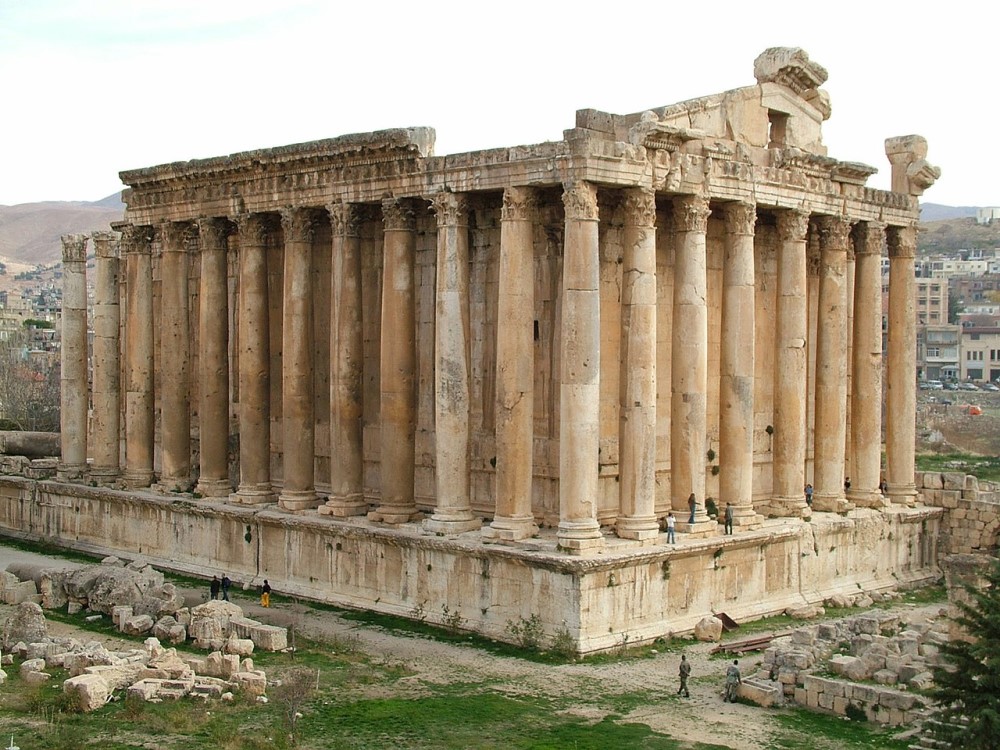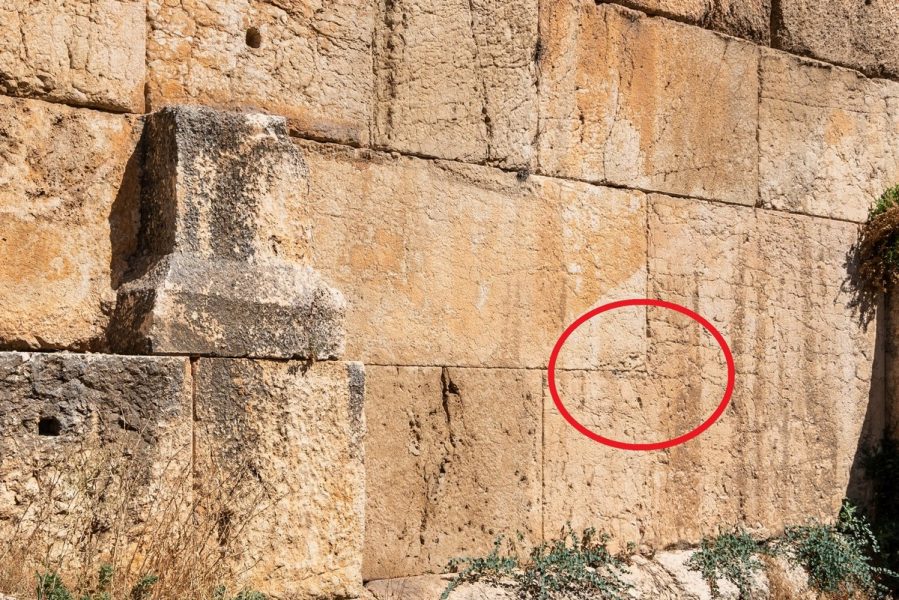Baalbek's Colossal Secrets: Roman Gods in Lebanon's Heart

Exploring the Roman Ruins in Baalbek
The discovery of the Roman ruins in Baalbek
Welcome to Baalbek, where history and architecture combine to create an unforgettable experience. One of the main attractions here is the ancient Roman ruins, discovered in the 18th century by European explorers. These ruins are a testament to the ingenuity and skill of the Roman engineers who built them.
The significance of the Roman ruins
The Roman ruins in Baalbek are not just an impressive feat of engineering; they also have significant cultural and historical value. They are a reminder of the Romans’ influence in the region and their impact on architecture, art, and culture. Some of the columns here are so massive that they are considered the largest in the world.
As you explore the ruins, you’ll see how the Romans used their knowledge of mathematics and engineering to create structures that have withstood the test of time. You’ll marvel at the intricate carvings and details on the columns, arches, and facades. You’ll also understand how grand and impressive these structures would have been in their prime.
So, put on your walking shoes, bring your camera and prepare to be awed by the majesty of the Roman ruins in Baalbek. Whether you are a history buff or just looking to experience something new, the ruins will surely leave you with memories that will last a lifetime.

The History of Baalbek
The origins of Baalbek and the Roman occupation
You're about to embark on an incredible journey through history as we explore the origins of Baalbek and the Roman occupation. Baalbek was initially founded as a Phoenician city, then conquered by Alexander the Great and later taken over by the Roman Empire. The Romans recognized the city's strategic importance, given its position on several major trade routes and decided to make it a centre of imperial power.
Baalbek's role in ancient trade routes
Now, let's talk about Baalbek's role in ancient trade routes. The city was a crucial junction between the East and West, making it a hub for commerce and trade. With its location at the crossroads of several major trade routes, Baalbek became a melting pot of cultures and languages. As a result, the city witnessed great wealth and prosperity, attracting merchants and traders from all around.
As you walk around the ruins of Baalbek, you'll see the remnants of this rich cultural heritage, from the temples dedicated to the Roman gods to the mosaic floors and decorated capitals. Whether you're interested in history or just looking for an adventure, the Roman ruins of Baalbek offer an unforgettable experience.
So put on your explorer's hat, and discover the wonders of the ancient city of Baalbek. You're sure to be mesmerized by its history and architecture.

The Temple of Jupiter
The massive scale of the Temple of Jupiter
Prepare to be awed by the sheer magnitude of the Temple of Jupiter. This monumental structure was among the largest religious edifices in the Roman world. It measured 88 meters long, 48 meters wide, and over 30 meters high. Its six towering columns were each one meter in diameter and over 20 meters tall.
The intricate carvings and designs of the Temple
But it wasn't just the scale that made the temple impressive. Its intricate carvings and designs are a testament to the skills and craftsmanship of the ancient Roman builders. The details on the capitals, friezes, and pediments were delicately carved, depicting mythological scenes of gods and goddesses.
Exploring the ruins of Baalbek is a journey through time that you won't forget. The Temple of Jupiter is just one of many awe-inspiring structures that await you in this magical place. Get ready for an adventure that will take you back to the fascinating history of Baalbek.

The Temple of Bacchus
The history and significance of the Temple of Bacchus
Let's focus on another magnificent structure - The Temple of Bacchus. This temple is one of the best-preserved Roman monuments and signifies the height of Roman architecture. It was also dedicated to the Roman god of wine and fertility, Bacchus, and was an essential hub of worship in Baalbek.
The impressive architecture of the Temple
The Temple of Bacchus was another architectural marvel, featuring intricate carvings and columns that stood out as symbols of sheer magnificence. You would have been impressed by its unique and stunning design, making it one of the region's greatest surviving examples of Roman architecture.
Exploring the ruins of Baalbek is a journey through time that you won't forget. The Temple of Jupiter and the Temple of Bacchus are just two of many awe-inspiring structures that await you in this magical place. Get ready for an adventure that will take you back to the fascinating history of Baalbek.

The Temple of Venus
The connection between the Temple of Venus and the goddess
Let's not forget about the Temple of Venus, dedicated to the Roman goddess of love and beauty. The structure highlights the importance of female deities in ancient Roman religion and the arts.
The unique features of the Temple
The Temple of Venus stands out for its unique features, including its hexagonal shape and intricate decorative patterns on its walls. It's another stunning example of Roman architecture that is not to be missed.
Exploring the ruins of Baalbek is an adventure that will take you back in time. The Temple of Jupiter, the Temple of Bacchus, and the Temple of Venus are some awe-inspiring structures that await you in this magical place.

The Trilithon
The massive stones that make up the Trilithon
As you wander around the ruins of Baalbek, you'll come across the Trilithon - a group of three massive stones weighing around 800 tons each. These stones are among the largest ever used in construction, and their sheer size will leave you astonished. The Trilithon was originally part of the Temple of Jupiter and is believed to have been placed there by the Romans between the 1st and 4th centuries AD.
The theories surrounding the construction of the Trilithon
The Trilithon's construction has long fascinated archaeologists and historians, with theories about how the Romans managed to transport and position such massive stones. Some suggest using a complex system of cranes and pulleys, while others believe they may have used water to lubricate the way for the stones. Whatever the method, it’s clear that the construction of the Trilithon was a remarkable feat of engineering.
Visiting Baalbek and seeing the Trilithon up close is undoubtedly an awe-inspiring experience. The Trilithon and the wider ruins of Baalbek offer a glimpse into the ancient world and the ingenuity of those who lived in it. So, be sure to add Baalbek to your list of must-visit sites and prepare to be amazed by its rich history.

The Legends of Baalbek
The myths and legends associated with Baalbek
As you step back in time while exploring Baalbek, you'll find the place steeped in myths and legends. The locals believe that Baalbek was the site where the gods descended from the sky, and they refer to it as "the Landing Place." It is believed that Baalbek was built by giants or djinn, and it served as a landing place for the gods.
According to one legend, Baalbek was where Zeus hurled a thunderbolt down to earth, which struck the ground with such force that it created a crater. The crater was later used as the foundation for the Temple of Jupiter. Another legend suggests that the goddess Astarte left her imprint on one of the stones of the Trilithon.
The influence of ancient gods on the architecture of Baalbek
The ancient gods profoundly influenced the architecture of Baalbek, which can be seen in the intricate carvings and magnificent structures that still stand today. The Temple of Jupiter was dedicated to the Roman god of skies and thunder, and the intricate carvings on the walls depict scenes from his life. The Temple of Bacchus was dedicated to the ancient Greek god of wine, while the Temple of Venus was dedicated to the Roman goddess of love.
The architecture of Baalbek also reflects the beliefs and ideas of the ancient world. The grandeur and size of the buildings were meant to reflect the power and might of the gods. The Trilithon, for example, stands as a testament to the engineering prowess of the Romans, and it is believed to be used as a platform for ritual sacrifices.
Baalbek is a remarkable place that can transport you back in time to the ancient world. Its myths and legends and its awe-inspiring architecture are a testament to the ingenuity and creativity of those who lived in it. Visiting Baalbek is a unique experience, one that you should not miss if you have a love for history and architecture.

Visiting Baalbek Today
How to get to Baalbek
If you are a history enthusiast, visiting Baalbek is a must-do experience. To reach Baalbek, you can take a taxi or rent a car from Beirut, the closest major city, around 85 km away. If you prefer public transport, minibuses are available too, but they can be slower and less comfortable. Regardless of your mode of transportation, the journey to Baalbek is scenic and beautiful, crossing lush valleys and soaring mountains.
Practical tips for visitors to the Roman ruins
When visiting Baalbek, it’s important to remember that the site is massive and requires several hours to explore properly. It would be best to spend at least half a day seeing all the major sites. Also, wearing comfortable shoes and bringing sunscreen and a hat is essential, as the sun can be scorching in the middle of the day.
If you are travelling during peak season, arriving early in the morning is advisable to avoid crowds. There is a small entrance fee, and it is wise to carry cash as credit cards are not accepted.
On-site, you can hire a local guide to gain in-depth knowledge about Baalbek's history and structures. The guides are knowledgeable and insightful and can significantly enhance your visit experience.
Baalbek is a historic treasure trove that reflects the diverse cultural influences of the ancient world. It's a marvel and an exceptional experience that will take you back in time. So whether you're a history enthusiast, architecture lover or just want to soak up the magic of this ancient place, Baalbek should be on your bucket list.
